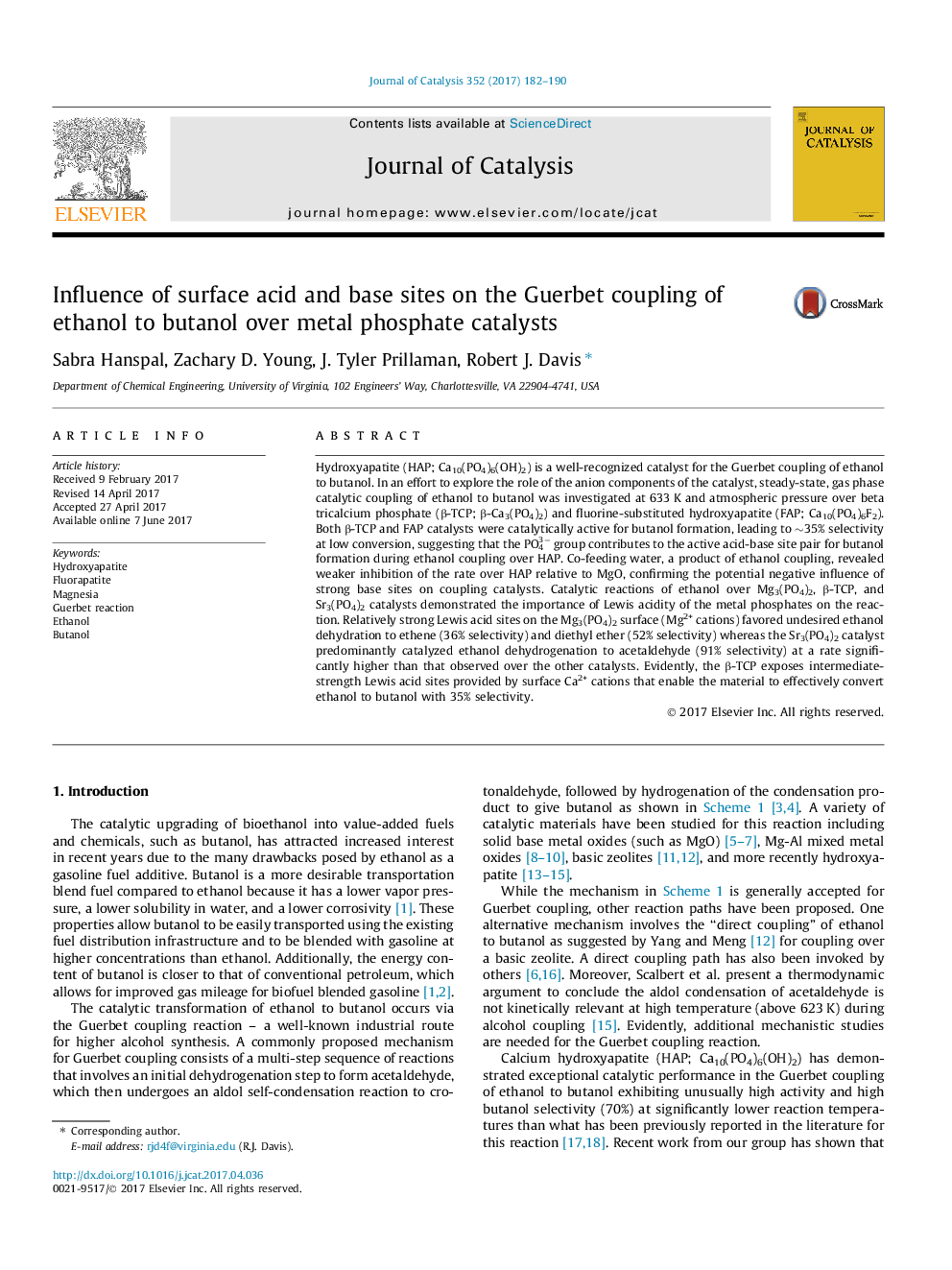| کد مقاله | کد نشریه | سال انتشار | مقاله انگلیسی | نسخه تمام متن |
|---|---|---|---|---|
| 6455367 | 1419757 | 2017 | 9 صفحه PDF | دانلود رایگان |
- The phosphate ion in HAP plays a major role in C-C formation.
- Water irreversibly inhibits butanol formation over MgO.
- High butanol selectivity requires appropriate strength acid-base sites.
Hydroxyapatite (HAP; Ca10(PO4)6(OH)2) is a well-recognized catalyst for the Guerbet coupling of ethanol to butanol. In an effort to explore the role of the anion components of the catalyst, steady-state, gas phase catalytic coupling of ethanol to butanol was investigated at 633 K and atmospheric pressure over beta tricalcium phosphate (β-TCP; β-Ca3(PO4)2) and fluorine-substituted hydroxyapatite (FAP; Ca10(PO4)6F2). Both β-TCP and FAP catalysts were catalytically active for butanol formation, leading to â¼35% selectivity at low conversion, suggesting that the PO43â group contributes to the active acid-base site pair for butanol formation during ethanol coupling over HAP. Co-feeding water, a product of ethanol coupling, revealed weaker inhibition of the rate over HAP relative to MgO, confirming the potential negative influence of strong base sites on coupling catalysts. Catalytic reactions of ethanol over Mg3(PO4)2, β-TCP, and Sr3(PO4)2 catalysts demonstrated the importance of Lewis acidity of the metal phosphates on the reaction. Relatively strong Lewis acid sites on the Mg3(PO4)2 surface (Mg2+ cations) favored undesired ethanol dehydration to ethene (36% selectivity) and diethyl ether (52% selectivity) whereas the Sr3(PO4)2 catalyst predominantly catalyzed ethanol dehydrogenation to acetaldehyde (91% selectivity) at a rate significantly higher than that observed over the other catalysts. Evidently, the β-TCP exposes intermediate-strength Lewis acid sites provided by surface Ca2+ cations that enable the material to effectively convert ethanol to butanol with 35% selectivity.
105
Journal: Journal of Catalysis - Volume 352, August 2017, Pages 182-190
